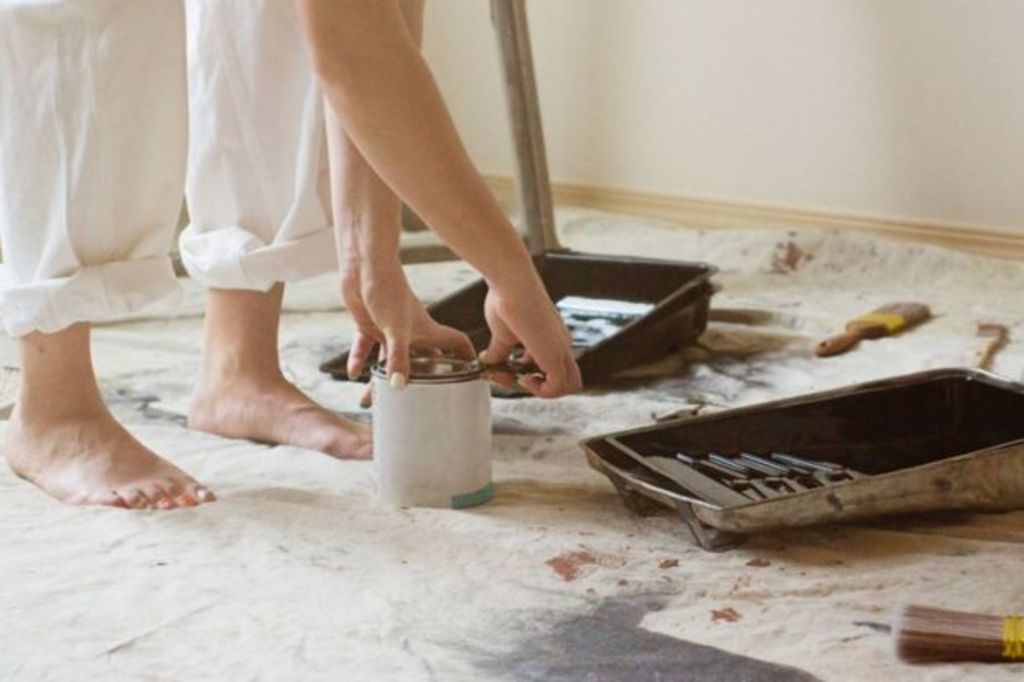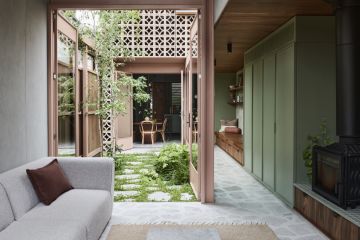Products and materials to avoid when planning your home makeover

When you’re planning a renovation, there are so many choices to be made and even more materials on offer. To save you becoming overwhelmed, here are a few things to avoid.
Floors
Laminate plank floors
My top flooring tip is to avoid cheap laminate products. Although readily available in large chain stores, these products are rarely as good as they appear in the long run. They might look great in the shop and when newly laid, but they generally start to look shabby in a short space of time.
Instead, I recommend a good-quality vinyl plank, real timber floating floors or a good quality laminate. Professional installation can make a world of difference between a mediocre result and a long-lasting and great-looking floor.
Floating timber floors
Not all timber flooring is created equal so, once again, don’t go cheap or the product will expand and contract causing all sorts of issues.
Floating floors are made with a multi-cross-layered substrate and a decorative timber surface or veneer. The difference in quality partly comes down to the type of materials used in the construction of the plank.
Problems can also occur when a cheaper substrate is used or the product is laid incorrectly. Spend extra on a good-quality floor; particularly if you plan to stay in your home for the foreseeable future.
- Related: The most common renovating mistakes
- Related: How not to over-capitalise on your kitchen renovation
- Related: Which type of flooring should you choose for your home
 Don’t go cheap when it comes to timber flooring to avoid issues. Photo: Stocksy
Don’t go cheap when it comes to timber flooring to avoid issues. Photo: Stocksy
Carpet
Inexpensive carpets are generally made of synthetic materials like polypropylene, polyester, nylon and more. While some of the better quality synthetic products can look great and be a suitable solution for your home, some will look cheap and shiny, and actually feel crispy under-foot.
Wall and floor tiles
The biggest problem with tiling is not the tiles, but the grout. Using a cheap grout or a grout in the wrong colour (white on a bathroom floor, for example) will result in problems over time and will cost you more in the long term.
Unless I’m designing a feature wall, I generally stick to matching the grout colour to the tile colour as perfectly as I can.
Kitchens
2 pack
Try to avoid buying a cheap 2-pack off-the-shelf kitchen. They’re often imported from overseas and that means you won’t be able to get an exact colour match should one of the doors or drawers get damaged and need replacing.
A better option is to get your 2 pack cabinetry done locally so you can choose a colour that is easily sourced if needed.
Laminate
Laminate is OK in the right setting, but steer clear of laminate cabinetry with a cheap or tape edge. Instead, edge your laminate doors and drawers with ABS or PVC to give a more solid look and to help with wearability.
 Laminate is OK in the right setting within the kitchen. Photo: Stocksy
Laminate is OK in the right setting within the kitchen. Photo: Stocksy
Vinyl wrap
Vinyl wrap kitchen doors have been given a bad rap (pardon the pun) in the past because they didn’t use a durable, heat-resistant adhesive. However, the quality is much better these days, and as long as you opt for a decent quality, vinyl wrap is a valid option. It will allow you to have a good solid colour and it is much harder wearing than 2 pack. It’s usually cheaper too!
Taps
This is not an area to scrimp on. You don’t have to go high-end, but do aim for good-quality products installed by a licensed plumber. Cheaper taps are more likely to cause problems; often within the wall cavity (which means you’ll have to pull off the wall tiles to get at it).
This could cost thousands in repairs; so while you may have saved $100-$200 on the purchase price, it could end up costing you far more in the end.
Cheaper tapware also tends to have little water efficiency and water flow is not always adequate, all of which can lead to hidden costs.
Lighting
You can get away with less expensive shades but never skimp on the actual fixtures. Poor-quality products can be quite unsafe, not to mention making your electricity charges skyrocket.
Paint
Cheap paint is usually of inferior quality, and you may not get a consistent look. This will be especially obvious on large areas. Poor-quality paint can also peel, and if you wash the wall, noticeable streaks and uneven patches can develop. Spend a little bit extra on good-quality paint.
.jpg) If possible make room on the budget for good-quality paint. Photo: Stocksy
If possible make room on the budget for good-quality paint. Photo: Stocksy
Jane Eyles-Bennett is one of Australia’s leading home renovation and interior design experts. She is an award-winning interior designer with more than 25 years’ experience designing the interiors and exteriors of homes, specialising in kitchens, bathrooms and living spaces.
Contact Jane at jane@hotspaceconsultants.com or via her website.
We recommend
States
Capital Cities
Capital Cities - Rentals
Popular Areas
Allhomes
More







